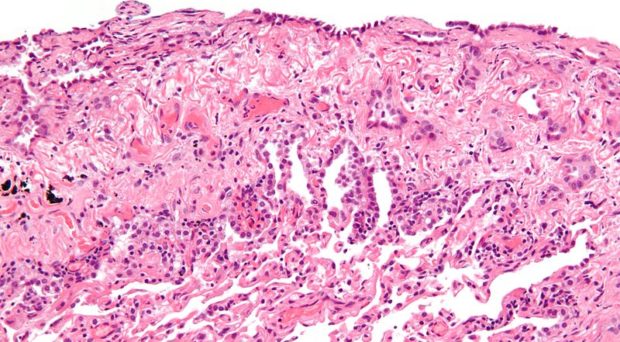
Mesothelioma is a rare form of cancer that develops in the thin tissue lining that surrounds and protects the lungs, abdomen, heart, and very rarely, the testicles. The main cause of mesothelioma is from a person being exposed to asbestos and then either inhaling or ingesting it. Tiny asbestos fibers enter the body via tracheal or esophageal pathways.
Despite common non-favorable prognosis, there has been an increase in survival rates for mesothelioma patients according to the second report by the Royal College of Physicians. The report that launched in 2016 in London indicates an improvement in the individuals that are diagnosed with the disease surviving for over a year. However, despite the improvement, survival rates are still poor.
There was a steep increase in mesothelioma cases and deaths in the past five years. This increase is due to the vast occupational exposure to asbestos and its extensive use between 1950 and 1980. The latest mesothelioma survival rates study used data from more than 2,000 patients who were diagnosed with malignant pleural mesothelioma in England during 2014.
Treatments for mesothelioma
According to the second mesothelioma report by the Royal College of Physicians, there are variations regarding the interventions and treatments that are offered to mesothelioma patients.
There was a general increase in the use of palliative chemotherapy and anti-cancer treatments between 2014 and 2016. The report indicates an increase in the use of these treatments, which went from 34% to 36.5% over the last two years. For mesothelioma patients with good health, the use of chemotherapy treatment has increased from 41% in 2014 to 53.5% in 2016.
With all these increases, there was a reduction in the use of radiotherapy among pleural mesothelioma patients. In 2014, 29% of mesothelioma patients were receiving radiotherapy treatment and in 2016, this fell to 16.5% of patients.
Surgical interventions are relatively uncommon among cancer patients. However, more procedures have been performed since the last audit in 2014. Surgical interventions & procedures have increased from 2.3 percent to 5.2 percent between 2014 and 2016.
Survival rates
In 2016 there was a study performed by the University of Maryland Medical Center. This study involved 73 pleural mesothelioma patients with 19 of the patients not having lymphatic node involvement.
Surgery was performed on each patient to remove or attempt to physically remove the cancer. After the surgery, photodynamic therapy that uses light and a photosensitizing agent to kill remaining cancer cells was administered. Lastly, chemotherapy was administered but only on 92% of the patients.
The report of this study indicates that all patients had an overall median survival rate of almost 3 years or 35 months. However, this figure was nearly doubled for the 19 patients whose mesothelioma had not yet spread to the lymph nodes. According to E. Albert Reece, the Medical Affairs Department’s Vice President, the results indicate a prolonged overall survival in some patients and they are quite promising.
Also according to the study, patients that underwent chemotherapy alone lived for only 12 to 18 months as opposed to the patients that lived nearly three years who were treated with multimodal therapy using the three types of treatment.
Survival rate according to tumor volume
In 2015, the Journal of Cardiothoracic published a meeting abstract detailing a study, conducted on 111 patients; found that tumor volume was a significant predictor of patient survival rates after extended pleurectomy/decortication surgery. Smaller tumors resulted in longer survival rates, as shown in in the table below.

Variation in survival between men and women
A study by The Society of Thoracic Surgeons that was published in the Annals of Thoracic Surgery in 2014 indicates a significant long-term and short-term variation in mesothelioma survival rates between female and male patients. Male patients had a survival rate of 4.5% whereas female patients had a survival rate of 13.4%.
In 2014, there were 2,515 mesothelioma deaths in Great Britain; 2,101 male deaths and 414 female deaths. The Australian Mesothelioma Registry recorded 575 mesothelioma patients in 2013. Of these people, 465 were males and 110 were females, and the majority (80.0%) were aged 65 years or over at the time of diagnosis.
With all facts and statistics considered, the survival rate and life expectancy for mesothelioma patients are improving. Between clinical trials and the combinations of multimodal treatments, mesothelioma patients should not lose hope as these are yielding much better results as compared to past studies.
Well described and very informative Chris. Thank you for your post, I will share this with my colleagues.